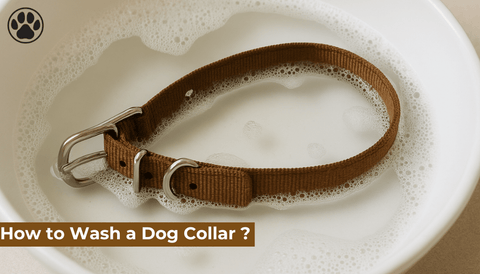
Can Small Dogs Run 5K ?
of reading - words
Running with your small dog can be a rewarding experience, but many pet owners wonder: can small dogs run 5K? The answer is yes, many small dogs can complete a 5K run, but their ability to do so depends on several factors, including breed, age, fitness level, and health condition. In this article, we’ll explore whether small dogs can handle the distance, how to train them properly, and what precautions to take.
Are Small Dogs Capable of Running 5K?
Breed Considerations
Not all small dog breeds are built for endurance running. Some are naturally more athletic, while others are prone to breathing issues or joint problems. Here are some small dog breeds that can handle a 5K run:
-
Jack Russell Terrier – High energy and excellent stamina
-
Miniature Poodle – Agile and intelligent
-
Dachshund – Can run, but should be monitored for back issues
-
Corgis – Short legs but surprisingly active
-
Papillon – Small but highly energetic
Breeds that may struggle with long-distance running include Pugs, French Bulldogs, and Shih Tzus, due to their brachycephalic (short-nosed) nature, which makes breathing difficult.
Age and Fitness Level
Young and active small dogs are more likely to complete a 5K run than senior dogs or puppies. If your dog is under one year old, their bones and joints are still developing, so intense running should be avoided until they are fully grown.
Older dogs may struggle with joint pain or arthritis, making long-distance running uncomfortable. Always consult your vet before starting a running routine with a senior dog.
How to Train a Small Dog for a 5K Run
Start Slow and Build Endurance
Just like humans, dogs need progressive training to build endurance. Here’s a simple training schedule to get your small dog ready for a 5K:
-
Week 1-2: Walk 1-2 miles, gradually increasing pace
-
Week 3-4: Alternate between jogging and walking
-
Week 5-6: Increase jogging time, reducing walking intervals
-
Week 7-8: Run continuously for longer periods, monitoring stamina
Gradually increase distance and intensity while ensuring your dog enjoys the process.
Monitor Your Dog’s Comfort Level
During training, watch for signs of exhaustion such as:
-
Heavy panting or excessive drooling
-
Limping or slowing down
-
Refusing to move forward
-
Lying down frequently
If your dog shows any of these signs, stop immediately and allow them to rest.
Choose the Right Running Surface
Small dogs have shorter legs and delicate paws, so running on rough terrain can be tough on them. Opt for:
-
Soft trails or grass instead of asphalt
-
Shaded routes to prevent overheating
-
Avoiding hot pavement that can burn their paw pads
Keep Hydration in Check
Small dogs can become dehydrated quickly, especially in hot weather. Always bring water for your dog and take frequent breaks during the run. Portable dog-friendly water bottles can make hydration easier.
Safety Precautions When Running with a Small Dog
Watch for Overheating
Small dogs are more susceptible to heat exhaustion, especially in warm climates. Avoid running during peak temperatures and look for shade and water stops along your route.
Use the Right Gear
Investing in the right running gear can improve comfort and safety for both you and your dog:
-
A lightweight, padded harness instead of a collar to reduce strain on the neck
-
A hands-free leash for better control
-
Dog booties if running on rough surfaces
-
Reflective gear if running early in the morning or at night
Pay Attention to Their Paws
Since small dogs have delicate paws, check for any cuts, cracks, or abrasions after each run. If their paws seem sensitive, consider using paw balm or dog shoes for protection.
Know Your Dog’s Limits
Not all small dogs will enjoy or be able to complete a 5K run. Some may prefer shorter distances or a slower pace. Listen to your dog’s cues and adjust accordingly.
Benefits of Running with a Small Dog
Physical Health Benefits
Running helps maintain a healthy weight, strengthens muscles and joints, and improves cardiovascular health in small dogs.
Mental Stimulation
Exercise is a great way to stimulate your dog mentally, preventing boredom and reducing destructive behaviors.
Strengthening Your Bond
Spending time running together enhances your bond with your dog and provides an opportunity for quality time outdoors.
FAQ
Can all small dogs run a 5K?
Not all small dogs can handle a 5K run. Active breeds like Jack Russell Terriers, Miniature Poodles, and Papillons are well-suited, but brachycephalic breeds may struggle.
How do I know if my small dog enjoys running?
Your dog will wag their tail, keep up with you, and appear excited to run. If they lag behind, pant excessively, or try to stop, they may not enjoy it.
Should I feed my dog before a 5K run?
Avoid feeding your dog right before running to prevent digestive issues. Give them a light meal at least an hour before and provide water before and after the run.
What should I do if my dog gets too tired during the run?
If your dog becomes exhausted, stop running, offer water, and allow them to rest in a shaded area. Never force a dog to continue running if they appear tired or distressed.
Can running damage my small dog's joints?
Running can be safe if done in moderation with proper training and surfaces. Avoid overexertion and ensure your dog is in good physical condition before long-distance running.
Conclusion
Many small dogs can run a 5K, but it depends on their breed, fitness level, and overall health. With proper training, safety precautions, and hydration, your small dog can enjoy running alongside you. Always listen to your dog's cues and consult a veterinarian before starting a new exercise routine. Running can be a fun and rewarding experience for both you and your small dog if done safely and correctly.




